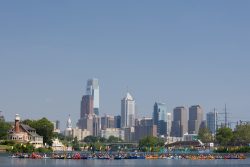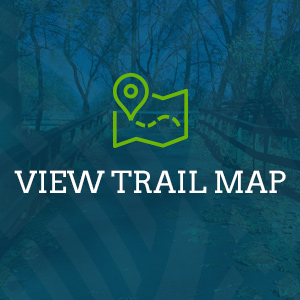Home /
Philadelphia

Philadelphia is located in southeastern Pennsylvania where the Delaware and Schuylkill rivers meet. William Penn founded the area in 1682 as one of the three original counties of Pennsylvania Colony. Philadelphia is not only known for its statewide milestones but the impact it had on the entire nation. It’s the location for some of the most historical moments of the United States including the first Continental Congress, the Declaration of Independence signing, and its role in the American Revolutionary War. Today, Philadelphia is the largest city in Pennsylvania although it has many characteristics of a small town such as parks and open spaces. It’s an urban area full of activities and sight-seeing opportunities.
Sites on the Trail in Philadelphia
American Philosophical Society Museum
Charles Wilson Peale, a Philadelphia artist, naturalist, and APS member, founded a popular and influential museum in 1784. It was one of America’s first museums, and the first to...
Learn MoreBarnes Foundation
The Barnes Foundation was established by Albert C. Barnes in 1922 to “promote the advancement of education and the appreciation of the fine arts.” It is home to one...
Learn MoreBartram’s Garden
On this site more than 250 years ago, John Bartram, a Quaker farmer, was stopped in his tracks by a daisy while plowing his fields. The plant’s simplicity and...
Learn MoreBicycle Coalition of Greater Philadelphia
Founded in 1972, the Bicycle Coalition of Greater Philadelphia is a 501(c)3 nonprofit organization that serves the Pennsylvania counties of Montgomery, Delaware, Chester, Bucks and Philadelphia as well as...
Learn MoreBoathouse Row
Boathouse row is a National Historic Landmark located along the Schuylkill River. It was listed on the National Register of Historic Places in 1987. The stretch is home to...
Learn MoreEastern State Penitentiary
Opened in 1829 as part of a controversial movement to change the behavior of inmates through “confinement in solitude with labor,” Eastern State Penitentiary quickly became one of the...
Learn MoreFairmount Park
Fairmount Park was officially founded in 1855 when the Lemon Hill estate was dedicated as a public park and renamed Fairmount Park. Support came from 2,400 citizens who signed...
Learn MoreFairmount Water Works Interpretive Center
The Fairmount Water Works was constructed in 1812 to pump water out of the Schuylkill River to serve the bustling City of Philadelphia. As Philadelphia rose into an industrial...
Learn MoreFranklin Institute
On February 5, 1824, Samuel Vaughan Merrick and William H. Keating founded The Franklin Institute of the State of Pennsylvania for the Promotion of the Mechanic Arts. Located in...
Learn MoreLaurel Hill Cemetery
Established in 1836, Laurel Hill is one of Philadelphia’s premier historic landmarks and one of the only cemeteries in the United States to be honored as a National Historic...
Learn MoreLaurel Hill Mansion
Discover the surprising and true story of Rebecca Rawle, a wealthy widow, who built this small country house in the Georgian style around 1764. After Rawle’s second marriage to...
Learn MoreLemon Hill
Robert Morris, signer of the Declaration of Independence and close friend of George Washington, purchased 350 acres along the banks of the Schuylkill River in July 1770. In 1798,...
Learn MoreManayunk Towpath
While cycling, Manayunk can be a destination or an excellent resting point on the Philadelphia-to-Valley Forge section of the Schuylkill River Trail. A portion of the trail incorporates the...
Learn MoreMutter Museum
In 1858, Thomas Dent Mütter, retired Professor of Surgery at Jefferson Medical College, presented his personal collection of unique anatomic and pathological materials to The College of Physicians of...
Learn MorePhiladelphia Canoe Club
Located at the confluence of the Wissahickon Creek and Schuylkill River, the Philadelphia Canoe Club’s headquarter is a former mill that was built around 1686-1689. The Philadelphia Canoe Club...
Learn MorePhiladelphia Museum of Art
Rising majestically at the end of the Benjamin Franklin Parkway, the Philadelphia Museum of Art stands as one of the great art institutions of the world. In the 125+...
Learn MoreSchuylkill Banks
It all starts on Schuylkill Banks, an eight mile stretch of distinctly urban riverfront in Philadelphia. As Philadelphia’s riverfront destination, Schuylkill Banks is home to greenways, parks, docks, the...
Learn MoreSchuylkill Center for Environmental Education
The Schuylkill Center is the largest tract of privately owned land in the City of Philadelphia. Located on the border of Philadelphia and Montgomery County, SCEE is a wonderful...
Learn MoreStrawberry Mansion
Formerly known as “Summerville,” the center section of Strawberry Mansion was built in the Federal style around 1790 by renowned lawyer Judge William Lewis, who drafted the first law...
Learn MoreWashington-Rochambeau Revolutionary Route (W3R)
The Washington-Rochambeau Revolutionary Route traces the historic path that French troops, under the command of General Jean-Baptiste de Rochambeau, took in 1781 from Newport, Rhode Island, to White Plains,...
Learn MoreWissahickon Valley Park
One of the most heavily industrialized creeks in America, the Wissahickon Creek and its impressive valley were home to dozens of mills and factories throughout the 18th and 19th...
Learn More








